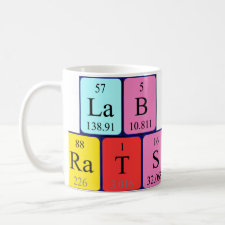
Authors: Chen WY, Chen CS, Lin FY
Article Title: Molecular recognition in imprinted polymers: thermodynamic investigation of analyte binding using microcalorimetry.
Publication date: 2001
Journal: Journal of Chromatography A
Volume: 923
Issue: (1-2)
Page numbers: 1-6.
DOI: 10.1016/S0021-9673(01)00971-2
Abstract: This study aimed at elucidating the interaction mechanism between an imprinted polymer and its template in aqueous environment with thermodynamic aspects. The herbicide 2,4- dichlorophenoxyacetic acid (2,4-D) was chosen as a model template to imprint a co-polymer of 4-vinylpyridine (4-VP) and ethyleneglycol dimethacrylate. Equilibrium binding isotherm analysis and isothermal titration microcalorimetry were used to quantify the contribution of enthalpy and entropy to the binding process, identify the nature of the interactions involved and confirm the existence of binding pockets with shape-complementarity to the template. For the binding process of 2,4-D to the imprinted polymer, we postulate three subprocesses: (1) dehydration of the binding pocket and of the 2,4-D, (2) adsorption of 2.4-D, and (3) rearrangement of the water molecules from the dehydration process. We found that binding in aqueous environment was due to the cumulative effect of pi -stacking and electrostatic interactions between the template and the functional monomers. At pH < 6. entropy is the dominating driving force, while at pH > 6 where the highest difference in binding between the imprinted and a non-imprinted reference polymer was observed, the enthalpy change accounts for most of the binding free energy. The developed microcalorimetric method sheds light on the binding mechanism of analyte molecules with imprinted polymers, in particular if the polymers are used in aqueous solvents. (C) 2001 Elsevier Science BV All rights reserved



Join the Society for Molecular Imprinting

New items RSS feed
Sign-up for e-mail updates:
Choose between receiving an occasional newsletter or more frequent e-mail alerts.
Click here to go to the sign-up page.
Is your name elemental or peptidic? Enter your name and find out by clicking either of the buttons below!
Other products you may like:
 MIPdatabase
MIPdatabase









